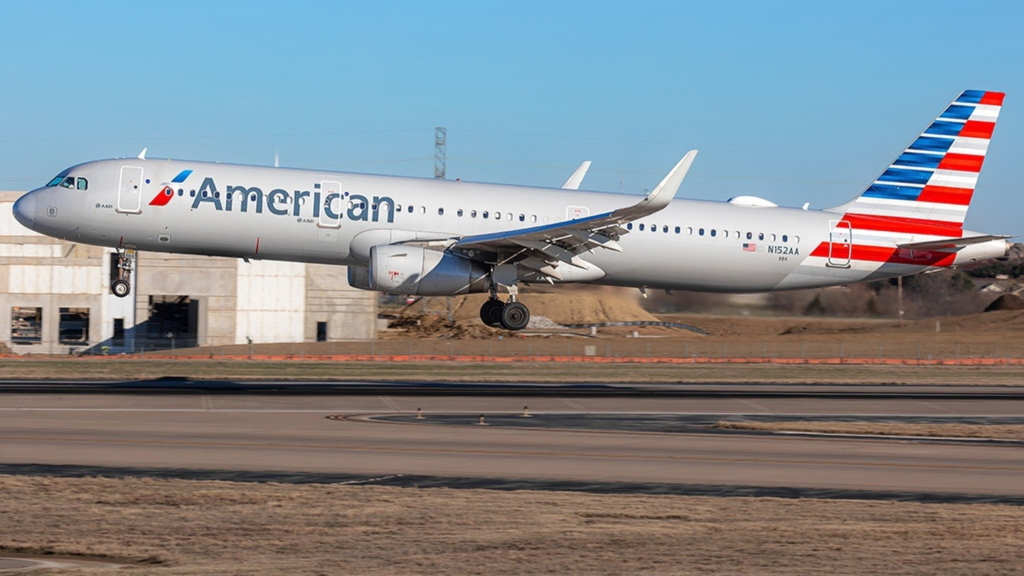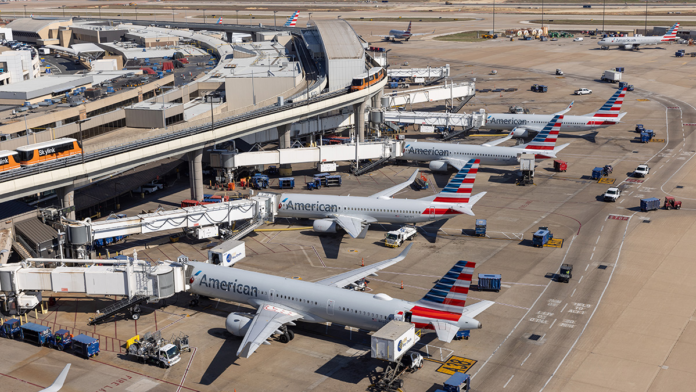AUSTIN- In a significant shift from its previous expansion plans, American Airlines (AA) has decided to drastically reduce its presence at Austin-Bergstrom International Airport (AUS).
This move marks the end of the carrier’s focus city strategy in Austin, which was initially implemented in 2021 and 2022.

American Airlines Cuts Austin Routes
During 2021 and 2022, American Airlines aggressively expanded its network out of Austin, growing to serve over three dozen destinations. This expansion included a mix of domestic and international routes, ranging from Cancun to Orange County and Tampa.
The strategy aimed to establish Austin as a key focus city for the airline, moving beyond its traditional hub-and-spoke model.
However, the landscape began to change in early 2024 when American started cutting flights to Austin. The latest schedule update shared by Adrian Waltz reveals even more substantial route reductions, effectively dismantling the focus city strategy.
The airline has been systematically reducing its Austin operations throughout 2024:
- January 2024: Flights to Bozeman, Cincinnati, Cozumel, Jacksonville, Memphis, and Reno were terminated.
- February 2024: Routes to Albuquerque, Eagle-Vail, El Paso, Fort Myers, Kansas City, Oklahoma City, Sacramento, Tampa, and Washington Dulles were cut.
- March 2024: Nassau flights ended.
- April 2024: Services to Liberia and Puerto Vallarta ceased.
The latest cuts include the following cities:
- November 2024: Boston, Las Vegas, Nashville, Orlando, and Raleigh
- January 2025: Orange County
Remaining Routes
After these cuts are implemented, American’s Austin operations will be drastically reduced. The airline will only serve its domestic hubs from Austin:
- Charlotte (CLT)
- Chicago (ORD)
- Dallas (DFW)
- Los Angeles (LAX)
- Miami (MIA)
- New York (JFK)
- Philadelphia (PHL)
- Phoenix (PHX)
Additionally, American will maintain two leisure routes to Mexico from Austin:
- Cancun (CUN)
- Los Cabos (SJD)
This significant network reduction clearly indicates that Austin no longer holds a focus city status for American Airlines.
The airline has reverted to a traditional hub-focused strategy for its Austin operations, maintaining only connections to its major hubs and a couple of popular leisure destinations in Mexico.
It’s worth noting that point-to-point Mexico flying is not unique to Austin in American’s network, as the airline operates similar services from various non-hub airports across the United States.
Reason for Austin Flight Cuts
American Airlines has abandoned its focus city strategy in Austin, well there are several factors contributing to this decision as reported by OMAAT.
The airline’s bet on Austin’s rapid growth has not panned out as expected. While Austin remains an attractive city with a solid economy, its growth has significantly slowed, particularly evident in the real estate market. Austin experienced the largest drop in home prices among major U.S. cities from summer 2022 to summer 2023, with no improvement since.
Despite the cooling real estate market, air travel demand in Austin hasn’t uniformly declined. British Airways (BA) plans to offer double daily flights to Austin in the summer of 2025, contrasting with Virgin Atlantic’s (VS) decision to discontinue Austin flights.
American Airlines’ service cuts in Austin reflect several strategic miscalculations. The airline overestimated Austin’s continued growth potential and aimed to outpace other major carriers in the market.
Austin’s focus city status heavily relied on origin and destination (O&D) traffic rather than connecting passengers, limiting its geographic advantage compared to American’s nearby Dallas hub.
Loss Making Hub
Reports suggest American has been losing money on its Austin expansion since its inception, mirroring similar challenges faced by Delta Air Lines (DL) domestic growth in Seattle (SEA). The expansion may have been partly motivated by a desire to prevent Delta’s growth in Austin, but sustaining losses indefinitely proved untenable.
American’s growth in Austin heavily utilized regional jets, which were abundant during the early pandemic. However, issues with the airline’s scope clause and the need to reallocate these aircraft to other markets complicated the Austin expansion.
Austin Airport’s limited capacity to handle increased traffic may have also played a role in American’s decision, though likely not as a primary factor. This move aligns with American’s pattern of failed strategies, reminiscent of attempts to turn Seattle into a long-haul hub and expand in New York.
Delta Airlines has steadily increased its presence in Austin while American retreated, highlighting the competitive dynamics at play.
Delta’s Steady Growth
Delta Air Lines is expanding its Austin operations, as it launched 11 new peak-day flights from Austin-Bergstrom International Airport (AUS) on April 22, 2024.
This expansion included new services to Midland-Odessa and McAllen, Texas, transforming Austin into a gateway for these cities to Delta’s global network.
The airline augments its Austin service by adding extra flights to Cincinnati and Raleigh-Durham, North Carolina, enhancing convenience for customers. Delta positions Austin as a crucial access point for its broader global network.
Passengers traveling through Austin to or from Midland-Odessa and McAllen gain access to nearly 50 peak-day nonstop flights. These flights connect to 15 U.S. airports, including all Delta hubs, Las Vegas, and Orlando, offering extensive coast-to-coast travel options.
Delta’s partners in AUS further extend global connectivity with nonstop services to Mexico City (MEX) and Amsterdam (AMS).
This expansion contributes to Delta’s 12% increase in peak-day seats year-over-year for its summer schedule across Texas, underscoring the airline’s commitment to growth and enhanced connectivity in key regions.
Austin-Bergstrom International Airport (AUS) on a normal day operates around 300 daily flights. Most connected airports as per FlightRadar24 data are:
| Airport Name | IATA Code |
|---|---|
| Dallas/Fort Worth International Airport | DFW |
| Denver International Airport | DEN |
| Hartsfield-Jackson Atlanta International Airport | ATL |
| Los Angeles International Airport | LAX |
| Nashville International Airport | BNA |
| Phoenix Sky Harbor International Airport | PHX |
| Harry Reid International Airport (Las Vegas) | LAS |
| O’Hare International Airport (Chicago) | ORD |
| George Bush Intercontinental Airport (Houston) | IAH |
| Dallas Love Field | DAL |
Stay tuned with us. Further, follow us on social media for the latest updates.
Join us on Telegram Group for the Latest Aviation Updates. Subsequently, follow us on Google News.
The post American Airlines Cuts 6 Routes from Austin Amid Strong Competition appeared first on Aviation A2Z.
